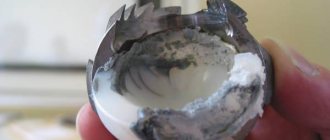Breast asymmetry
Bust asymmetry or disproportion refers to differences in breast size or shape. The disproportion may be congenital or acquired. There are different types of symmetry violation:
- by volume;
- location of the nipples and areola;
- degree of omission;
- form.
Bust disproportion is an anatomical feature, an aesthetic flaw, familiar to 80% of girls and women. It can be expressed in:
- unilateral macromastia;
- micromastia of one of the glands;
- tubular structure;
- mastoptosis of varying severity.
Plastic surgery considers 3 degrees of severity of breast disproportion (mild, moderate, severe). Depending on this, doctors offer a solution.
If you have “different breasts” - there are differences in the volume of glandular tissue, different amounts of integumentary tissue, such disharmony is corrected not by the selection of unique, extravagant in shape prostheses (although such a proposal may come), but by additional testing before endoprosthetics:
- reduction;
- mastopexy;
- and other necessary types of correction.
If you are not ready for additional surgical intervention, you should know that the disproportion can be corrected to a limited extent with the help of endoinserts. Even the best surgeon cannot promise you to create complete harmony.
If asymmetry has arisen, with your own symmetrical breasts, then the question is either about the unsatisfactory intervention of the plastic surgeon, or about your violation of the regime during the recovery period.
How to avoid asymmetry: prevention methods
To avoid the problem of breast asymmetry, you need to follow the rules. These include the following recommendations:
- Offer the baby both breasts at one feeding, the same number of approaches;
- it is necessary to ensure that the emptying of the chest is uniform;
- it is important to systematically change your position at night;
- you should also express evenly so that the emptying is equal;
- You should not rub the chest with camphor oil during the feeding period.
These simple rules will help you avoid problems associated with asymmetry of the mammary glands.
Causes of breast disproportion after endoprosthetics
When correction of one deficiency leads to the emergence of another, it is very disappointing. But don't rush to blame the surgeon. The most common reasons for the development of imbalance of proportions after endoprosthetics are:
- implant rupture as a result of injury when saving money and choosing a cheap prosthesis;
- dislocation of the endoprosthesis during early physical activity and sex during early rehabilitation;
- deformation of the endoinsert and mastoptosis as a result of refusal to wear compression garments;
- sleeping on your stomach or side in the first days after surgery.
Are you sure that you followed the regime, strictly followed the instructions, and purchased a good prosthesis? Then a violation of symmetry can develop due to incorrect:
- selection of the size/shape of the prosthesis, without taking into account your anatomy;
- forming a pocket for it (by size, location);
- marking the area of operation during preliminary correction (reduction, mastopexy).
The risk that you will have one breast larger than the other after implantation of prostheses is higher if there is serious congenital disproportion.
Size alignment. How to do it
Let's start with the simplest. That is, from the fact that the defect arose due to the fact that the baby feeds mainly from one “titti” only because it was so convenient for the mother herself. For example, she does not want to change position at night, and during the day this may be due to wearing a toddler in a sling on one side. In this case, you just need to change a few things during the feeding process:
- You should always feed your baby first from the smaller breast. Then he should receive a portion of milk from the large one, and then again switch to the small one.
- Often, babies like to hold the “titya” in their mouth all night before going to bed, falling asleep or, in general, all night, not letting go and sometimes sucking on it. In this case, you should also give him a small one. Perhaps the baby will be capricious and demand another, larger one than usual. Then you should give in to him, and when he falls asleep, change position. Just at this moment he will switch to prolonged sucking before going to bed and thus completely empty the little one.
- Brief attachments, so-called snacks, should be done from the smaller breast.
- When feeding at night, it is also better to prefer small breasts.
- If, during all these efforts, an unpleasant sensation suddenly appears in the larger breast and a feeling of fullness, then you should let the baby suck on it for a very short time. Only to eliminate this uncomfortable condition.
What will the above actions lead to?
- Firstly, if the baby suckles and empties the small breast more often, he will thereby contribute to the production of more milk in it.
- Secondly, if the large one is not completely emptied, this will eventually reduce lactation in it. And after all, you can enjoy the result - the smaller breast will become larger due to the fact that the amount of milk in it will increase, and the larger one will be smaller, since the volume of valuable fluid in it will decrease.
Important! After the dream of a beautiful bust comes true, you need to ensure that the little one “works” on both glands evenly.
If your nipple is injured, you should take care of its healing and finally learn how to properly attach your beloved child to the breast.
How to fix it?
What to do if the operation brings unpleasant results? Contact the surgeon who operated on you. He knows the intricacies of the operation and can assess the degree of symmetry violation. Doctors do not consider a slight difference in the shape or size of the mammary glands to be a pathology and recommend not touching it. The severe imbalance requires correction.
If your surgeon is unavailable, you can consult online with specialists by attaching before and after photos to your question. But you should know that correcting asymmetry is only operational. You can hide a defect with the help of shapewear, but only breast augmentation can remove the imbalance. If, in addition to the lack of harmony, you are worried about:
- pain;
- change in color of tissues in the bust area (redness, paleness, blueness);
- swelling began;
- the temperature has risen.
You need to urgently run to the doctor. You may have a serious complication.
When can the result of the operation be assessed?
Many women in the first months after surgery ask how to correct asymmetry. This is unreasonable. Tissue swelling and hematomas prevent one from assessing the harmony of forms at the beginning of rehabilitation. The first results are visible after 3 months of recovery, and after six months you can evaluate the final result and draw conclusions.
Even if you have a pronounced disproportion, noticeable from the first postoperative days, repeat surgery is possible only after tissue restoration. This means that at least 6 months must pass before the surgeon’s re-intervention.
Causes
The reason that the mammary glands have become different sizes may be improper attachment of the child. If the baby begins to loosely grasp the nipple, this subsequently leads to the formation of microcracks and the onset of inflammation. The woman begins to feel discomfort and, without noticing it, offers the baby one breast more often than the other. Due to this, more milk is produced in one mammary gland than in the other. Asymmetry appears. But these are not all the reasons leading to this pathology.
Read also
Insect bites in children: associated symptoms, pharmaceuticals and traditional methods of treatment, preventive actions
When the reason is mom
The main and most common causes of asymmetry can be considered:
- Disrupted pumping process. If a woman constantly expresses more nutritional fluid from one breast, then asymmetry develops.
- The occurrence of inflammatory diseases in the female body that affect the mammary glands and disrupt lactation.
- Incorrectly organized night feeding. At this time of day the milk is stronger than during the day. And if a woman, due to her habit or convenience, places the baby on one side, then a certain mammary gland will then be filled with milk.
- Another reason for asymmetry is that when feeding, a woman prefers only one position that is comfortable for her. She feels comfortable in it. But at the same time, stimulation captures one mammary gland, which then becomes large. In this case, you should try to alternate between both breasts, without thinking about comfort.
When it's about the baby
Sometimes the baby himself begins to suckle on one breast more willingly than the other. The reason for this may be a more comfortable nipple shape. As a result, only one mammary gland is emptied, which is then more actively filled with milk.
A child may also choose one breast only because it is easier to get food from it.
This problem is relevant during the first weeks of lactation, since the milk ducts are not fully developed, they are clogged, and milk begins to actively flow. Warming up the tight breasts from which you need to express milk will help you cope.
If a woman initially had asymmetry of the mammary glands, the baby will suck better from the gland that contains more milk. As a result, the disproportion will increase. The baby should try to be given another breast, which has less milk.
If it's about hormones
Sometimes the cause of the asymmetry that appears can be hormonal disruptions occurring in the female body. During pregnancy, certain hormones begin to be actively produced, affecting the condition of the entire body. One breast may begin to enlarge faster and stronger than the other. Even after the lactation period, asymmetry continues to be present.
If the problem does not go away over time, then you should consult a doctor. Surgery may be needed.
Is it possible to avoid this complication?
You can reduce the risk of developing asymmetry after mammoplasty if:
- choose a high-quality prosthesis, a good clinic, a competent doctor;
- follow all specialist recommendations during the recovery period;
- take care of the skin of the bust and carefully “wear” the implants.
With this we say goodbye to you. We are waiting for you on our page again. Read our new texts and share information with friends and acquaintances via social networks.










